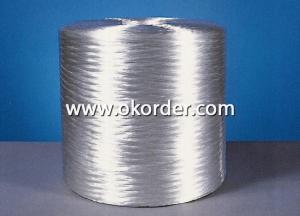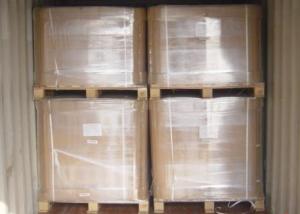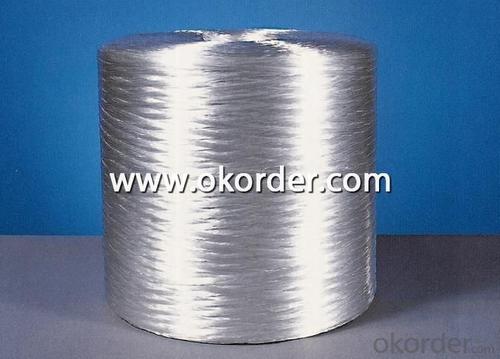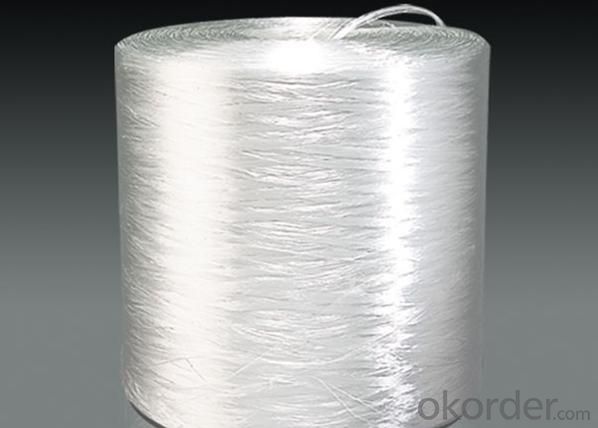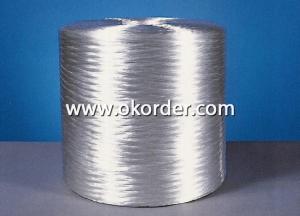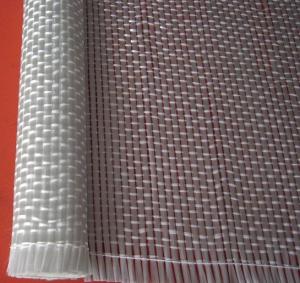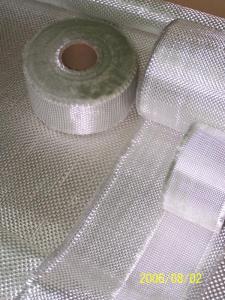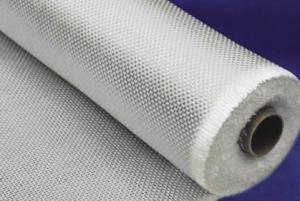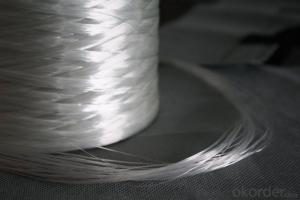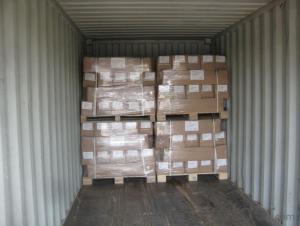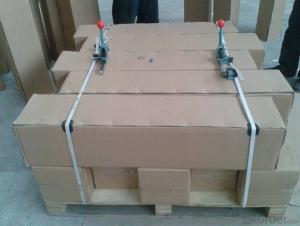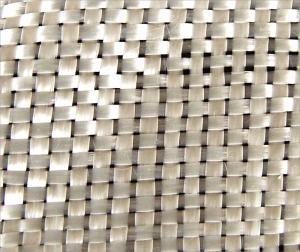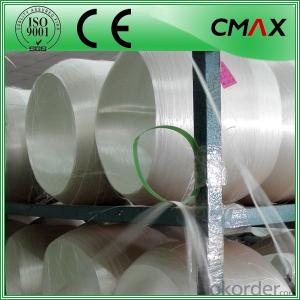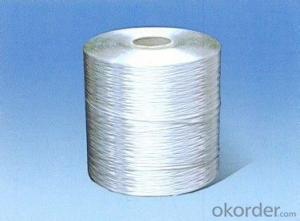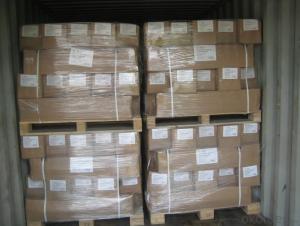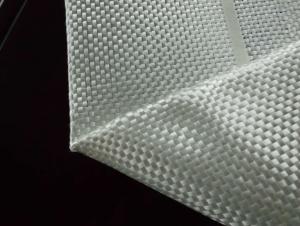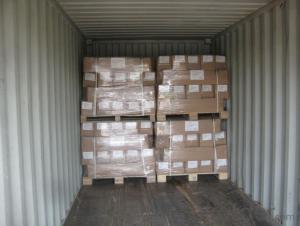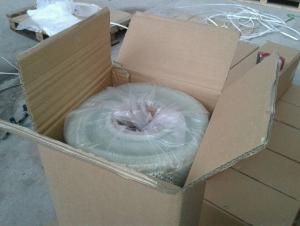Roving Mat Fiberglass E-Glass Assembled Roving for Spray Up 180
- Loading Port:
- China Main Port
- Payment Terms:
- TT or L/C
- Min Order Qty:
- 19600 kg
- Supply Capability:
- 1000000 kg/month
OKorder Service Pledge
OKorder Financial Service
You Might Also Like
Introduction of E-Glass Fiber Spray Up Roving
10C Assembled roving for SPRAY UP process which is coated with high performance silane sizing, compatible with UP resin and Vinyl ester resin.
It is a versatile purpose spray up roving used to fabricate boats, bathtubs, water tanks, centrifugal casting pipes and panel etc.
Specification of E-Glass Fiber Spray Up Roving
PRODUCT NAME | E-GLASS FIBER ASSEMBLED ROVING for spray up 2400TEX | |
TEST ITEM | STANDARD NO. | STANDARD VALUE |
LINEAR DENSITY(TEX) | ISO 1889-1997 | 2400±120 |
STIFFNESS (MM) | iso 3375-1997 | 130±15 |
COMBUSTIBLE MATTER CONTENT (%) | iso 1887-1995 | 1.15±0.15 |
moisture CONTENT (%) | iso 3344-1997 | ≤0.10 |
Product Properties of E-Glass Fiber Spray Up Roving
1. Excellent process: easily chopped, good dispersion flay lying down and good anti-static performance.
2. Good wet-out: quick wet-out (resin), easily delete bubbles, well compatible with different resins.
3. Good composite performance: the composite is with properties of high mechanical strength and good surface effect etc.
Package of E-Glass Fiber Spray Up Roving
The roving will be packed on 20 pallets for a 20ft' container, or can be packed in small carton box.
The detailed package is listed as follows,
4 x 4 rolls/layer, 4 layer/pallet, 10 pallets
4 x 4 rolls/layer, 3 layer/pallet, 10 pallets.
Each layer is separated with paperboard. Each Pallet is supported by very strong paper tube at the four corners of pallet, packed in big carton, wrapped in a polythene stretched film.
.
Storage of E-Glass Fiber Spray Up Roving
Unless otherwise specified, fiberglass products should be stored in a dry, cool and rain-proof area. It is recommended that the room temperature and humidity should be always maintained at 15℃-35℃ and 35%-65% respecitively. To ensure safety and avoid damage to the product, the pallets should not be stacked more than three layers high. When the pallets are stacked in 2 or 3 layers, care should be taken to correctly and smoothly move the top pallet.
FAQ for E Glass Spray up Roving
1. Why Choose us?
CNBM is a stated own company, provide the guarantee for the best quality, best service and safety business.
2. How will we guarantee the quality?
a, ISO 9001-2008 quality control system;
b, Strict and regular quality control in production;
c, Inspeciation when loading into container before shippment;
d, Sample stock for one year for quality tracing and record.
3. What is your MOQ?
Our MOQ is one pallet.
4. Can you provide sample?
Yes, samples are in stock. we can offer free sample for you.
5. Payment terms?
We can accept L/C, T/T etc.
6. What is the Production Lead Time?
5 *20GP each day.
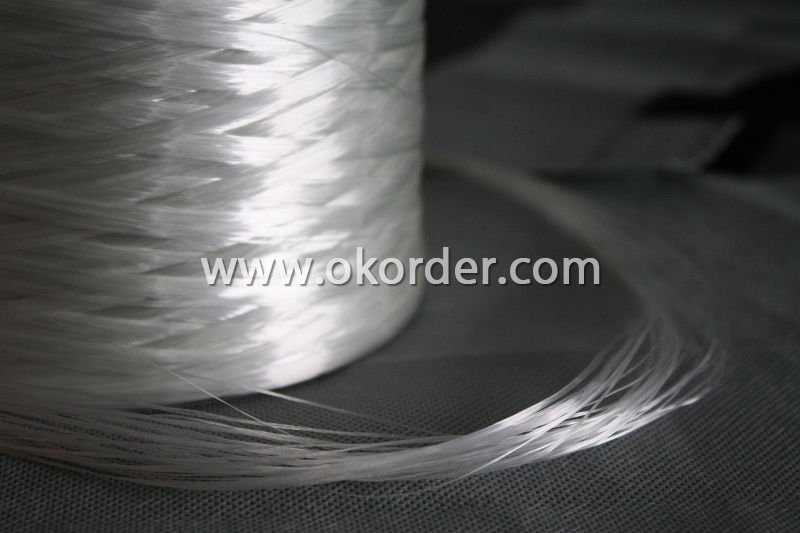
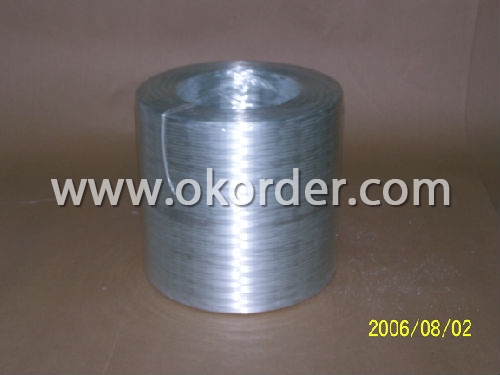
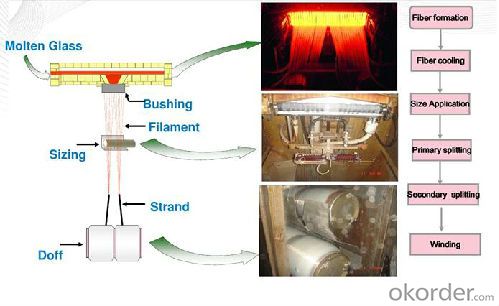
- Q: Does glass fiber reinforced plastic has expiration date?
- High temperature. When you store it, you need to pay attention to moisture proof and dust. Glass fiber roving has no expiration date.
- Q: What is the production process of FRP grille?
- Reciprocating fiber winding technology (belonging to the fixed length method): in this process, dipping tank with mandrel rotating reciprocating motion, long fiber glass fiber with a certain angle relative to the mandrel axis auxiliary, auxiliary angle (i.e. winding angle) by dipping groove movement speed and mandrel speed ratio control, control of electric glue impregnation groove translational motion by a computerized machine. The number of plies increases gradually to the wall thickness of the design. When the winding is finished, the resin in the product is basically solidified. After solidification, the core die is removed from the glass tube.
- Q: Knowledges of bamboo fiber.
- The production process of bamboo fiber: bamboo, bamboo pulp, crude fiber - fiber carding - spinning - textile. Characteristics of bamboo fiber fabric is: antibacterial, high strength, healthy, moisture absorpotion, cooling, deodorization, kept warm, soft and comfortable. Especially suitable for infant clothing. It is a good choice.
- Q: Is glass steel a glass?
- Ordinary steel is only a combination of iron and carbon, while the composition of FRP is complicated. Toughened glass is stronger than ordinary glass. One advantage is strong, and the two is broken, will not produce the tip of the debris, so that people are relatively safe.
- Q: What is the difference between glass fiber reinforced plastic antenna and cannon antenna?
- There is no difference. What if the gain is the same. The diameter of cannon antenna also is glass steel with it is actually a backfire antenna, and its muzzle must target the goal. Outer diameter materials of some cannon antenna can be iron, and the cannon antenna is very thick.
- Q: What does fireproof bag used for ?
- The outer layer of fireproof bag is made of glass fiber with special treatment. Its inner layer is filled with special refractory, thermal insulation and expanding material. The fireproof bag is not flammable with fire resistance limit is up to over 4 hours and it can expand and solidify at a high temperature.
1. Manufacturer Overview
| Location | Chongqing, China |
| Year Established | 1971 |
| Annual Output Value | Above US$ 50 Million |
| Main Markets | North America, Eastern Europe, Southeast Asia, Mid East, Eastern Asia |
| Company Certifications | ISO9001 |
2. Manufacturer Certificates
| a) Certification Name | |
| Range | |
| Reference | |
| Validity Period |
3. Manufacturer Capability
| a) Trade Capacity | |
| Nearest Port | Chongqing |
| Export Percentage | 40%-50% |
| No.of Employees in Trade Department | 21-50 People |
| Language Spoken: | English |
| b) Factory Information | |
| Factory Size: | Above 2000,000 square meters |
| No. of Production Lines | Above 4 |
| Contract Manufacturing | |
| Product Price Range | Average |
Send your message to us
Roving Mat Fiberglass E-Glass Assembled Roving for Spray Up 180
- Loading Port:
- China Main Port
- Payment Terms:
- TT or L/C
- Min Order Qty:
- 19600 kg
- Supply Capability:
- 1000000 kg/month
OKorder Service Pledge
OKorder Financial Service
Similar products
Hot products
Hot Searches
Related keywords
